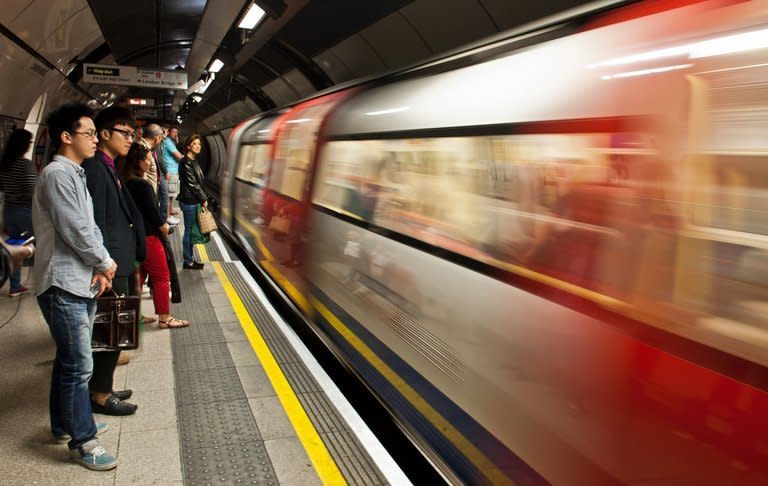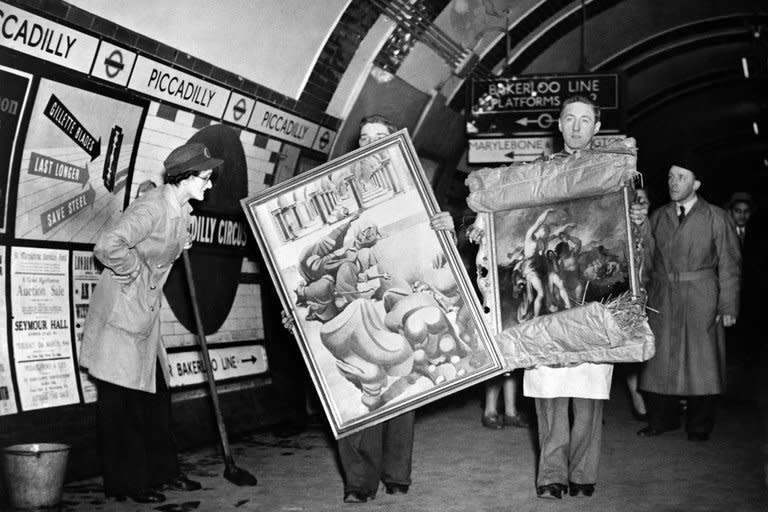London Underground celebrates its 150th anniversary
The London Underground, the world's oldest metro system, celebrates its 150th anniversary this week, still rumbling along and carrying four million passengers a day across the British capital. On January 10, 1863, after three years of privately-funded construction work, London's first underground railway line opened to the public. Long queues formed at each of the seven stations for the chance to ride the line, in carriages lit by gas lamps and pulled by a steam locomotive. Passengers could travel in first, second or third class, and from 1874 onwards, in smoking or non-smoking carriages. "For the first time in the history of the world men can ride in pleasant carriages, and with considerable comfort, lower down than gas pipes and water pipes... lower than the graveyards," enthused the Daily News newspaper at the time. William Hardman, one of the first passengers, said: "We experienced no disagreeable odour, beyond the smell common to tunnels. The carriages... are so lofty that a six footer may stand erect with his hat on." That first line, designed to relieve congestion in what was then the world's biggest city, linked three of London's railway terminuses (Paddington, Euston and King's Cross) with the heart of the city. The Metropolitan Railway ran for three miles (five kilometres) and had seven stops. A century and a half later, the Tube runs for 250 miles (402 kilometres), linking 270 stations and carries passengers on 1.1 billion journeys per year. "It became the lifeblood of London," David Waboso, Transport for London's capital programmes director, told AFP. Furthermore, "the symbol of the Tube became the symbol of London", said Oliver Green, who co-wrote the book "Underground: How the Tube Shaped London". The "roundel" -- a red circle with a horizontal blue bar -- first appeared in 1908 and is as much an indelible London icon as the Tube map. Designed by Harry Beck in 1931 and first issued two years later, it was inspired by electronic circuit boards and only roughly resembles the actual layout of the Tube lines. The Tube sign and map have become globally-recognised symbols of London to match black taxis, red buses and the Houses of Parliament clock tower. The Tube has had to adapt to the rhythm of London life and live through some of the British capital's defining moments. During the Blitz -- the World War II Nazi bombardment of London and other cities -- tens of thousands of Londoners slept in Tube stations to shelter from the air raids. Some 177,500 people were recorded on September 27, 1940. Hospitals were installed inside and, to avoid chaos for commuters, white lines were painted on the platforms to mark out the dividing line between passengers and sleeping families. Six decades later on July 7, 2005, the Tube itself was attacked, when four suicide bombers blew themselves up on three Underground trains and a bus, killing 52 innocent victims. Throughout its history, the Tube has been cherished and derided -- a tourist may have a very different view from a commuter who has just spent half an hour sweating in a crammed carriage held up by signal failures. "There is a love-hate relationship between Londoners and the Underground," Green told AFP. "They all complain about it" due to its breakdowns, endless upgrade works and costly fares -- £116.80 ($187.60, 143.40 euros) a month to cover only the most central zone -- "but they have to use it". Due to chronic underinvestment over several decades, the Underground has become a "monster, sclerotic and tangle-limbed", according to The Daily Telegraph newspaper, struggling to respond to the ever-increasing growth in passenger numbers. The 1987 fire at King's Cross station, which killed 31 people, served as a "wake-up call", said Green. The government began to reinvest in the Tube in the 1990s and a big modernisation programme got under way in 2003. Due to take until 2020, it is costing £1.4 billion pounds per year. The other side of the coin is that lines are often partially closed at weekends as work is carried out, and getting around becomes a test of endurance.





